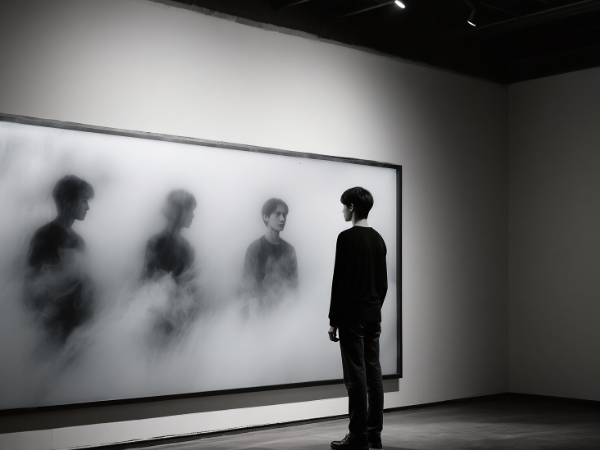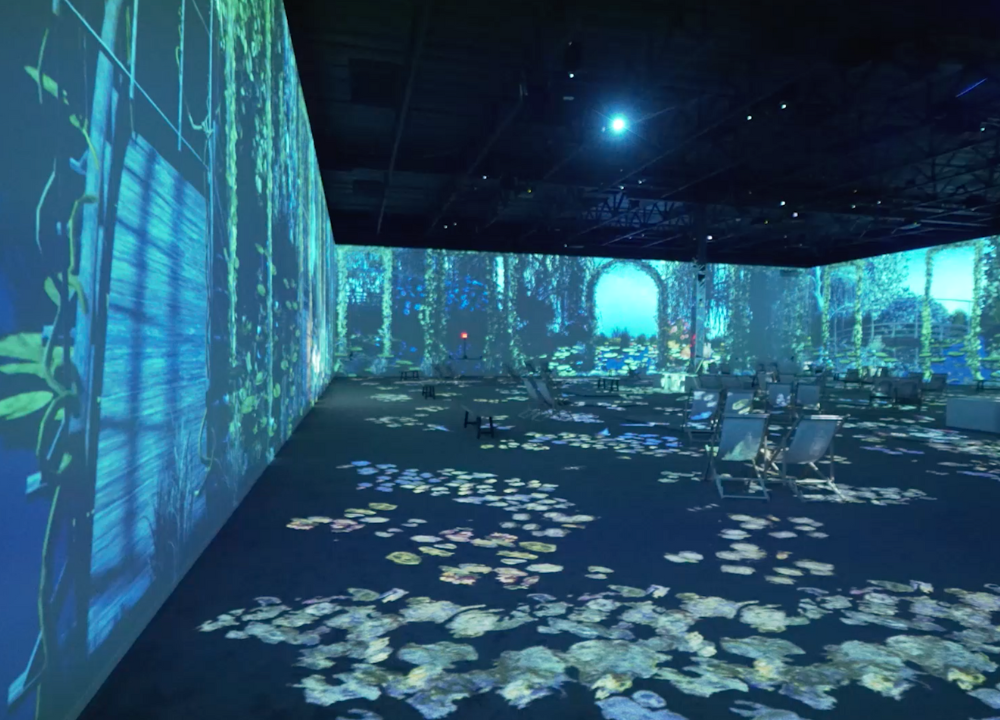If you knew the secrets they wish visitors understood, your experience would be richer, more meaningful, and even more enjoyable. Keep reading, because these insider tips will change the way you explore art and history forever—and help you connect with what you see on a whole new level.
Curator Insights
Curators hold unique knowledge about the places they manage. Their insights reveal fascinating details visitors often miss. These secrets enrich the visit experience and deepen understanding. Exploring curator insights opens a world beyond the usual tour. It shows the care and thought behind every display. Knowing these insider facts makes a visit more memorable.
Behind-the-scenes Stories
Curators live with the collection every day. They witness special moments and challenges that visitors never see. These stories often explain why certain items are displayed a certain way.
For example, some artworks need special light or temperature controls. Curators monitor these conditions closely to keep pieces safe. They also share tales about how items were found or restored.
Here are some common behind-the-scenes secrets:
- Restoration surprises: Many objects come with hidden damage repaired carefully.
- Rare acquisitions: Some pieces were bought after long negotiations or lucky finds.
- Exhibit changes: Displays rotate often to protect delicate items.
Understanding these facts helps visitors appreciate the work behind each exhibit. It also shows the effort to preserve history and art for future generations.
Hidden Treasures
Curators know the collection’s hidden gems. These are items not on main display or less noticed by visitors. They reveal unusual stories or rare craftsmanship.
Often, hidden treasures include:
| Type of Treasure | Description | Why It Matters |
|---|---|---|
| Unseen sketches | Preliminary drawings of famous artworks. | Show artists’ creative process. |
| Personal letters | Correspondence from historical figures. | Offer insight into their thoughts and times. |
| Miniature artifacts | Small objects with intricate detail. | Highlight skilled craftsmanship. |
Asking curators about these hidden items often leads to surprising discoveries. Visitors gain a deeper connection to the exhibits and the stories they tell.
Exhibit Etiquette
Visiting an exhibit offers a unique chance to connect with art and history. Curators often wish visitors understood the basic rules of exhibit etiquette. These guidelines help protect artworks and ensure everyone enjoys the experience.
Respecting Artworks
Artworks are delicate and need careful handling, even if you only view them. Curators want visitors to remember that each piece is unique and irreplaceable. Touching art can cause damage that may not be visible right away. Oils and dirt from hands can harm surfaces and colors over time. Stay a safe distance from all artworks, even if there are no barriers.
Here are some key points to respect artworks:
- Do not touch paintings, sculptures, or any displayed items.
- Keep a safe distance as marked by signs or ropes.
- Avoid leaning on display cases or walls near artworks.
- Follow staff instructions about handling or viewing items.
Curators appreciate visitors who stay calm and patient around art. Rushing or crowding can disturb the pieces and other guests. Take your time to enjoy each work quietly.
Photography Rules
Photography rules vary by exhibit but always protect the artworks and respect other visitors. Flash photography can damage sensitive materials like old paper, fabric, or paint. Many places allow photos only without flash. Some exhibits forbid photos entirely to keep the experience special or to protect copyrights.
Before taking any pictures, check the signs or ask staff for guidance. Follow their instructions closely to avoid problems. Respect other visitors who want to enjoy the art without distractions.
Common photography rules include:
- No flash or tripod use inside the exhibit.
- Do not use selfie sticks or large equipment.
- Stay behind barriers or marked lines when photographing.
- Avoid blocking walkways or other visitors while taking photos.
Using a camera quietly and carefully helps keep the exhibit safe. It also lets everyone enjoy the space without interruption. Remember, your photos should not disturb the art or people around you.
Optimal Visiting Tips
Curators hold many secrets that can make your visit smooth and enjoyable. Knowing the best times to visit and how to move through busy areas can change your whole experience. These optimal visiting tips help you avoid stress and see more. Understanding these simple ideas prepares you for a better trip.
Best Times To Visit
Choosing the right time to visit a museum, gallery, or exhibition can greatly improve your experience. Many places have peak hours when crowds are large. Visiting during quieter times lets you enjoy the displays without feeling rushed or overwhelmed.
Here are some tips on the best times to visit:
- Early mornings: Most places are less crowded just after opening.
- Weekdays: Tuesday to Thursday usually have fewer visitors than weekends.
- Off-season: Visit during less popular months for a calm atmosphere.
- Late afternoons: Some locations get quieter before closing time.
Use this simple table to pick your visit time:
| Time | Visitor Level | Experience |
|---|---|---|
| Early Morning (Opening Hour) | Low | Quiet, peaceful, best for photos |
| Midday (12 PM – 2 PM) | High | Busy, longer lines, crowded exhibits |
| Afternoon (3 PM – 5 PM) | Moderate | Less crowded, relaxed pace |
| Evening (Last Hour) | Low | Calm, fewer visitors, good for reflection |
Planning your visit around these times helps you see more details. It also lets you spend quality time with each exhibit. Curators wish visitors knew this. It shows respect and care for the art or artifacts.
Navigating Crowds
Busy crowds can make any visit stressful. Learning how to move through crowded spaces helps you enjoy your trip. Curators want visitors to feel comfortable and focused, not rushed or lost.
Here are practical tips for navigating crowds:
- Follow the flow: Move with the crowd direction to avoid blockages.
- Use side paths: Many exhibits have less traveled routes; explore them.
- Take breaks: Step aside to rest and avoid fatigue.
- Visit smaller rooms first: These often clear up faster.
- Keep your group small: Smaller groups move faster and fit better through tight spaces.
Understanding crowd patterns helps you plan better routes. Try this simple ordered list to manage your path:
- Enter the venue and grab a map or app.
- Head to less popular exhibits first.
- Pause at quiet zones to rest or observe.
- Return to main exhibits when crowds thin out.
- Exit through less crowded paths to save time.
These tips let you enjoy the visit without feeling overwhelmed. Curators hope visitors use these ideas to respect the space and others. A smooth visit means more time to appreciate the art or history on display.
Interactive Experiences
Interactive experiences are the heart of many museums and galleries. Curators design these moments to make visitors feel involved, not just observers. They want guests to touch, try, and explore exhibits in ways that create lasting memories.
Engaging With Displays
Many visitors think museum displays are just for looking. Curators wish everyone knew that some exhibits are made for touching and interacting. These displays invite you to:
- Press buttons to hear sounds or stories.
- Use touchscreens to learn more details.
- Handle replicas to feel textures and shapes.
Interactive displays help visitors understand the subject better. For example, a science museum might let you operate a simple machine or explore a virtual ecosystem. History exhibits may offer puzzles or digital reconstructions to solve. These activities make learning active and fun.
Here is a quick guide on how to engage with interactive displays:
| Type of Display | How to Engage | What You Learn |
|---|---|---|
| Touchscreen Kiosks | Tap icons and scroll through info | Detailed facts and visuals |
| Physical Replicas | Hold or move parts gently | Texture, weight, and design details |
| Audio Stations | Press play to listen | Stories, interviews, or explanations |
Respect guidelines. Some objects cannot be touched. Look for signs or ask staff if unsure. Engaging properly enhances your visit and keeps exhibits safe.
Workshops And Events
Curators design workshops and events to deepen visitor experience. These activities offer hands-on learning beyond regular displays. Joining a workshop helps you:
- Try new skills related to the exhibit theme.
- Meet experts who share insider knowledge.
- Discuss ideas with other visitors.
Workshops often focus on art, science, or history. Some examples include:
- Crafting ancient jewelry in a history museum.
- Building robots in a science center.
- Painting techniques in an art gallery.
Events like lectures, film screenings, or guided tours add extra value. They explain topics in an easy way and invite questions.
Here’s what to expect from workshops and events:
| Type | Duration | Participation Level | Benefits |
|---|---|---|---|
| Hands-on Workshop | 1-2 hours | Active | Skill practice, deep learning |
| Lecture or Talk | 30-60 minutes | Passive/Interactive | Expert insight, QA |
| Guided Tour | 1 hour | Active listening | Detailed exhibit context |
Booking ahead helps. Some workshops fill quickly. Also, check age limits and materials needed. These experiences make visits richer and more fun.
Preservation Challenges
Visitors might not realize how much effort is needed to keep exhibits safe for future generations. Knowing these challenges helps visitors understand why some rules exist and why certain areas may be restricted. It also shows the balance between sharing culture and protecting it.
Conservation Efforts
Curators and conservators use many methods to protect and maintain collections. These efforts aim to stop decay and repair damage. Each object requires a special approach depending on its material and age.
- Climate control: Museums keep temperature and humidity at steady levels. Too much moisture causes mold and rust, while dryness can make materials brittle.
- Light management: Bright light can fade colors and weaken fibers. Curators limit light exposure with special bulbs and timed lighting.
- Cleaning and repair: Experts clean objects with gentle tools and chemicals. They fix cracks, tears, or missing parts carefully to keep authenticity.
- Storage solutions: Artifacts not on display are stored in acid-free boxes and padded supports. This prevents pressure and chemical damage.
Conservation is ongoing. Curators monitor conditions and update methods as technology improves. This ensures collections stay safe for years.
Visitor Impact
Visitors can affect preservation, often without knowing. Even small actions can cause harm to fragile objects. Curators want visitors to enjoy exhibits while protecting them.
Common visitor impacts include:
- Touching artifacts: Oils and dirt from hands damage surfaces and fabrics.
- Excessive light exposure: Flash photography and bright lights speed up fading.
- Humidity and temperature changes: Large groups raise room temperature and moisture.
- Accidental bumps or spills: Crowds can cause accidents near displays.
Rules like “no touching” and “no flash photography” help reduce damage. Signs and staff reminders guide visitors to respect these rules.
| Visitor Action | Effect on Artifacts | Preventive Measure |
|---|---|---|
| Touching | Leaves oils and dirt, causes wear | Clear signage and barriers |
| Flash photography | Accelerates fading of colors | Flash ban and staff enforcement |
| Large crowds | Changes room climate, increases risk of accidents | Limited group sizes and monitored entry |
| Food and drink | Spills cause stains and attract pests | Strict no food or drink policies |
Visitors play a key role in preservation. Their respect for rules helps protect cultural treasures.




